Proton X50 Interior Revealed: A Practical Space Designed for Young Drivers
 LienJul 03, 2025, 11:53 AM
LienJul 03, 2025, 11:53 AM
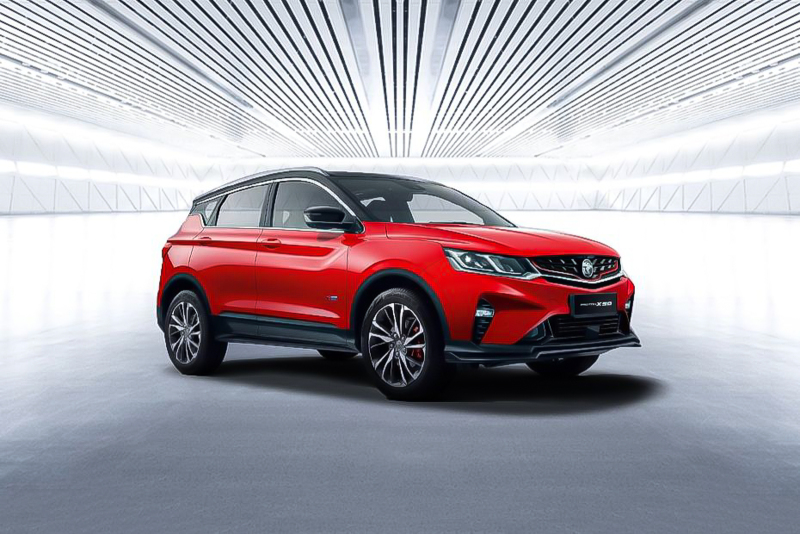
【PCauto】The modern, feature-rich interior of the Proton X50 caters to young, urban drivers. The Proton X50, a stylish small SUV that was co-developed by Proton and Geely, has gained a lot of popularity in Malaysia since its 2020 launch. Based on the Geely Binyue chassis, it has a 1.5L turbocharged three-cylinder engine and a 7-speed dual-clutch transmission. It offers a decent balance between performance and fuel economy.
The Proton X50's high-end interior features include a 10.3-inch touchscreen, a digital instrument cluster, and a panoramic sunroof. Standard safety features include electronic stability control and six airbags. Higher-spec vehicles can also have smart driving technologies like adaptive cruise control and automated emergency braking.
As a city SUV designed for young families, the Proton X50 interior offers strong value with a starting price of RM 86,300. It stands as a solid challenger to Japanese cars in the same class. The X50 is especially well-suited for developed road conditions. Its effective use of internal space, well-rounded feature list, and Proton’s nationwide after-sales network are all significant reasons why it remains a popular choice among local consumers.
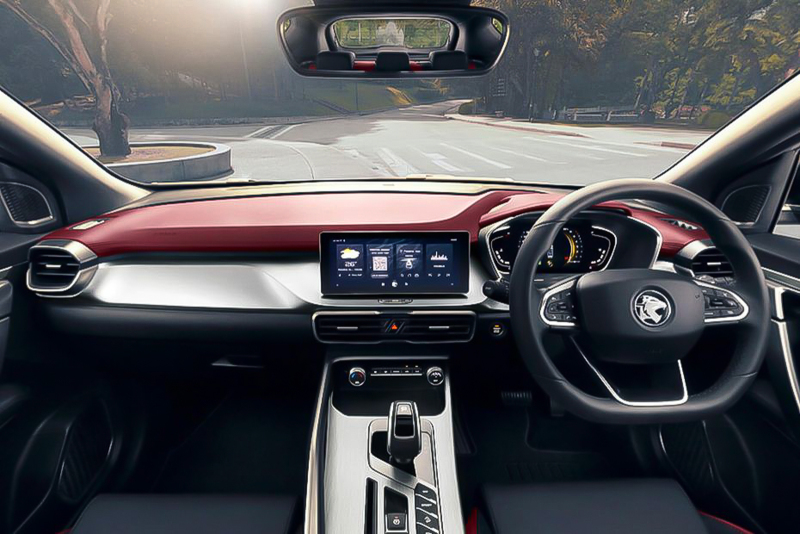
Part 1: Interior Design Concept
Core Design Philosophy
Take a close look at the all-new Proton X50, and its Proton X50 interior design clearly reflects the tastes and needs of today’s young drivers.
Sitting behind the wheel, the layered dashboard and floating central touchscreen stand out as the core elements of the Proton x50 interior design. This layout keeps the cabin clean and tech-forward. The flat-bottom three-spoke steering wheel, accented with matte metal trim, perfectly matches the sporty character of the SUV.
With the Proton X50 interior design, Proton has created a youthful and high-tech cabin atmosphere that appeals directly to modern drivers.

Thoughtfully Built for Different Users
The Proton X50 standard interior is built with practicality in mind. It features fabric seats and a plastic steering wheel, paired with a 10.3-inch touchscreen and a mechanical instrument panel. It covers all the essentials without stretching the budget.
Step up to the Proton X50 executive interior or Proton X50 premium interior, and you’ll notice a clear upgrade in both materials and cabin feel. These trims come with synthetic leather seats that are easier to maintain and visually more refined. The upper dashboard is finished with soft-touch TPO material, while the door armrests are wrapped in microfiber leather for a more premium tactile experience.
For buyers seeking top-tier quality, the Proton X50 flagship interior offers exclusive premium leather seats, metal pedals with a solid feel, and detailed contrast stitching that adds a sense of craftsmanship to the cabin.
Variant Differences and Feature Comparison
| Key Features | Standard | Executive | Premium | Flagship |
| Central Display | 10.3 inches | 10.3 inches | 10.3 inches | 10.3 inches |
| Instrument Cluster | Mechanical dashboard | Mechanical dashboard | Full-color LCD | Full-color LCD |
| Seat Adjustment | Manual | Manual | Driver's seat 6-way electric | Full power + memory function |
| 360°Image | × | Rear View Camera | ● | ● |
Part 2: Materials and Finish Compared to Rivals
When you look more closely at the Proton X50's interior, you can see that Proton made some thoughtful choices to adapt to Malaysia's hot and muggy climate. Unlike rivals like the Honda HR-V, which still uses hard plastics, the Proton X50 executive interior feels more upscale thanks to soft-touch materials on the dashboard and microfiber leather on the door panels.
Of course, if you compare the Proton X50 and X70's interiors, you'll notice that the X50 forgoes some luxury features, like imitation wood trim, to keep costs down. To make the Proton X50 flagship interior sportier and more upscale, Proton added carbon-fiber-style accents and brushed metal buttons (on the Sport model).
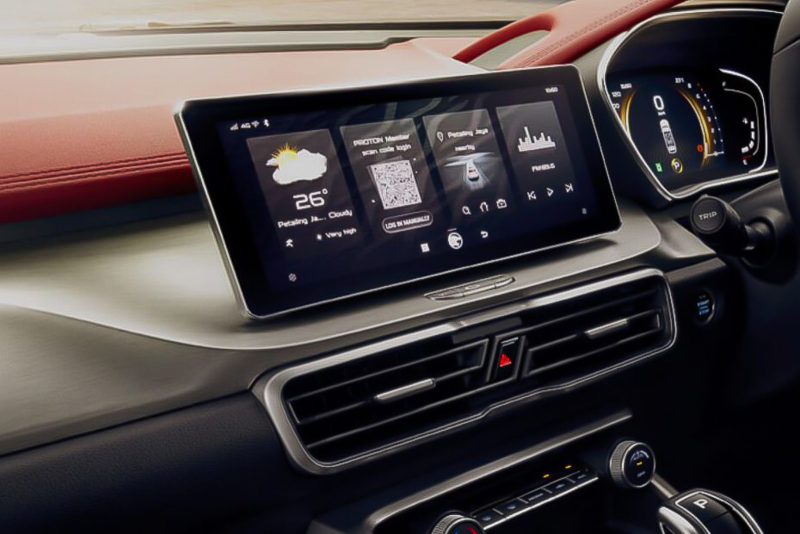
Part 3: Seat Comfort and Layout
Core Material Overview
The seats in the Proton X50 interior vary across different trims. While the Proton X50 standard interior just has simple fabric upholstery, the flagship interior has 6-way power-adjustable seats with a 15% higher cushion for improved support.
The back seat cushion is larger than the class average of 480mm, at 500mm across all trims. Additionally, passengers can enhance practical comfort by adjusting the rear backrest by five degrees.
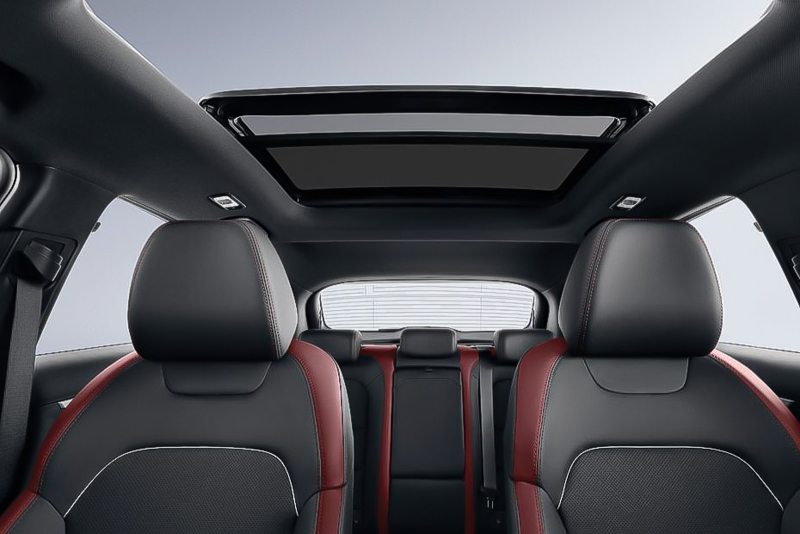
In-depth Comparison with Competitors in the Same Class
Given its low cost, I think the Proton X50's inside seats are more practical and pleasant than those of the majority of its rivals in its class. Compared to Japanese rivals like as the Honda HR-V, the X50 boasts sportier seats that provide better support. Additionally, the seats, starting with the flagship version, are composed of higher-quality leather. Long drives are made less taxing by the cushioning's ideal feel, which is neither too soft nor too hard.
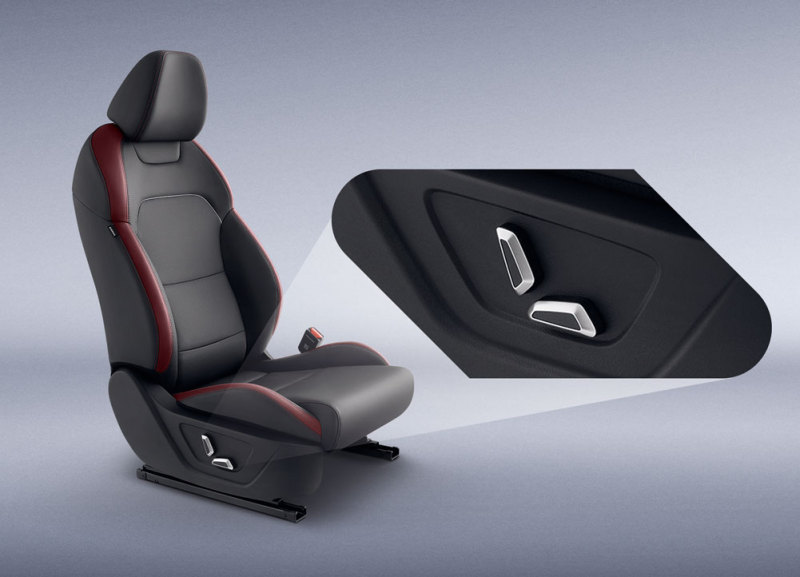
More significantly, the flagship trim of the X50 has power adjustment for the front seats, which is uncommon for this price range. Additionally, compared to many competitors, the rear seats provide additional legroom. A comfortable journey is possible even for taller passengers.
The back seats of the X50 also fold down in a 40/60 split. When handling heavier objects, this offers greater flexibility. With superior materials and an ergonomic design, the X50 outperforms competitors such as the Perodua Ativa. Its overall seat quality gives the impression that it is of a higher caliber.
Part 4: Instrument Cluster and Tech Integration
Cabin Tech Layout
The Proton X50 interior demonstrates high competition in technology features. A 10.3-inch high-definition touchscreen with the GKUI smart system is included. Voice commands, internet navigation, and smartphone connectivity are all supported with this system. The display of driving information is enhanced by the full digital instrument cluster.

The Proton X50 also offers advanced driver assistance systems (ADAS). These include adaptive cruise control (ACC), lane keeping assist (LKA), forward collision warning (FCW), and autonomous emergency braking (AEB). These features provide a safer driving experience.
In addition, the X50 has a 360-degree surround view camera system and wireless charging available on higher trims. These put it ahead of many rivals in the same segment.
The Proton X50 interior supports remote control functions. Through a smartphone app, drivers can start the engine, control the air conditioner, and unlock the doors remotely. This greatly improves daily convenience.
With all these tech features, the X50 stands out as a very attractive option in its price range.

Ease of Use and Areas to Improve
The Proton X50 interior offers many user-friendly features. The 10.3-inch touchscreen is responsive and smooth to operate. With the GKUI system, you can quickly control navigation and entertainment with voice commands, which helps keep your focus on driving. The button layout is nicely thought out. Physical buttons for popular operations like air conditioning and volume make it quick and easy to modify settings without distraction.
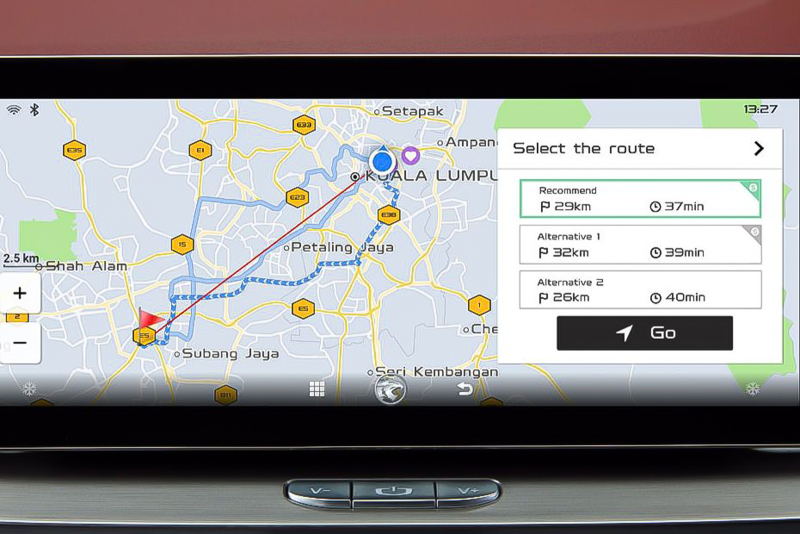
The interior of the Proton X50 might yet be improved in a few places, though. Despite being transparent, the screen is prone to fingerprints and may appear somewhat reflecting in direct sunlight. The majority of orders can be controlled by voice, however it could take some getting accustomed to because some phrases aren't always correctly picked up. While some of the high-tech features, such as the 360-degree camera and ADAS functions, are really helpful, it may take some time for new users to get used to everything.
Part 5: Space and Storage Solutions
Storage Space Design
The Proton X50 interior offers plenty of thoughtful storage options for everyday use. Under the front center console, there’s an open shelf that’s perfect for keeping a wallet or phone within easy reach. You also get two cup holders and a center armrest box with just the right amount of space for small items.
The door pockets are wide enough to hold a water bottle or a folded umbrella without trouble. The glove compartment on the passenger side is neatly shaped, making it a good spot for documents or smaller belongings.
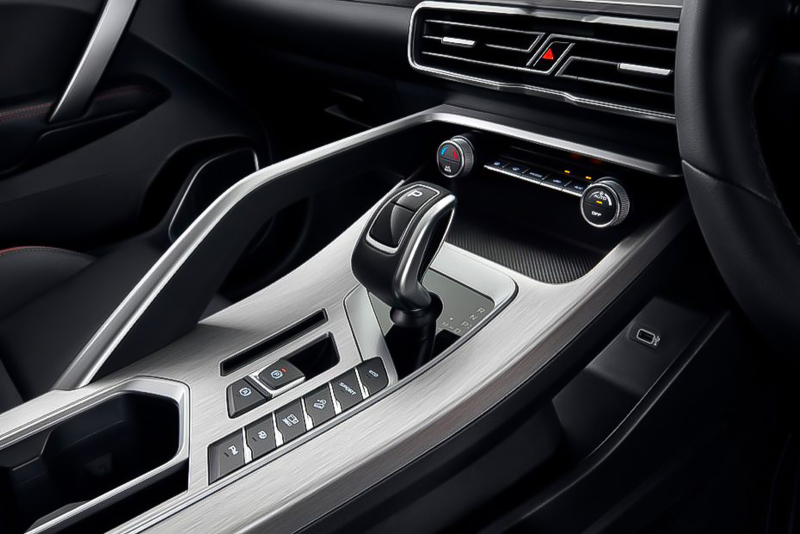
There are also some useful additions for the backseat passengers. The seatback pockets behind the front seats are excellent for holding magazines or tablets, and the door storage bins are spacious enough to hold water bottles or small objects. For a small SUV, the Proton X50's internal trunk room is mediocre. Although it might not carry larger goods well, it manages daily shopping and quick outings with ease.

Part 6: Full Safety Package
Airbag System
The standard cabin of the Proton X50 has four airbags and ESC for basic protection. Six airbags are included in the Proton X50 Executive cabin and higher. These consist of full-length curtain airbags, front side airbags, and twin front airbags. When combined, they offer comprehensive protection in the case of an accident, lessening the force applied to the head, chest, and torso.
To provide better passive safety, the airbag system cooperates with the vehicle's electronic stability control and strengthened body structure. This configuration provides dependable protection in front, side, or offset crashes and satisfies the ASEAN NCAP five-star safety standards.
One highlight of the system is its smart sensors. They can detect the severity and direction of an impact and decide whether airbag deployment is needed. This helps prevent unnecessary activation. On top of that, seatbelt pre-tensioners across the cabin tighten instantaneously upon an accident, keeping passengers firmly in place and minimizing the chance of harm.
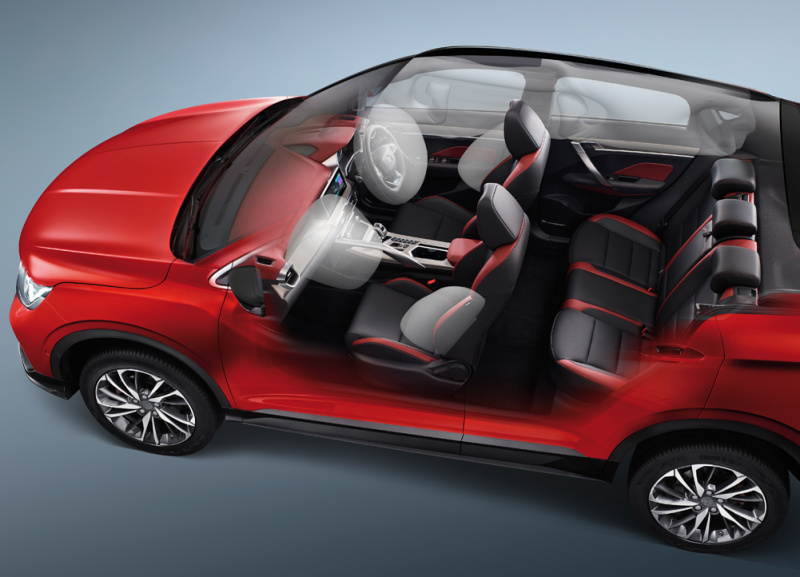
Smart Safety Features
Key features like adaptive cruise control (ACC), lane keeping assist (LKA), forward collision warning (FCW), and autonomous emergency braking (AEB) are included in the Proton X50's full ADAS package. The combination of these systems makes driving safer. In addition, the X50 has a 360-degree camera system, which is unique for its class.
Additionally, the X50 can be controlled remotely via a mobile application. Drivers can start the engine, turn on the air conditioning, or unlock the doors right from their phone. This adds a lot of convenience to daily use. Combined with its strong list of tech features, the Proton X50 interior stands out as one of the most appealing choices in its price range.
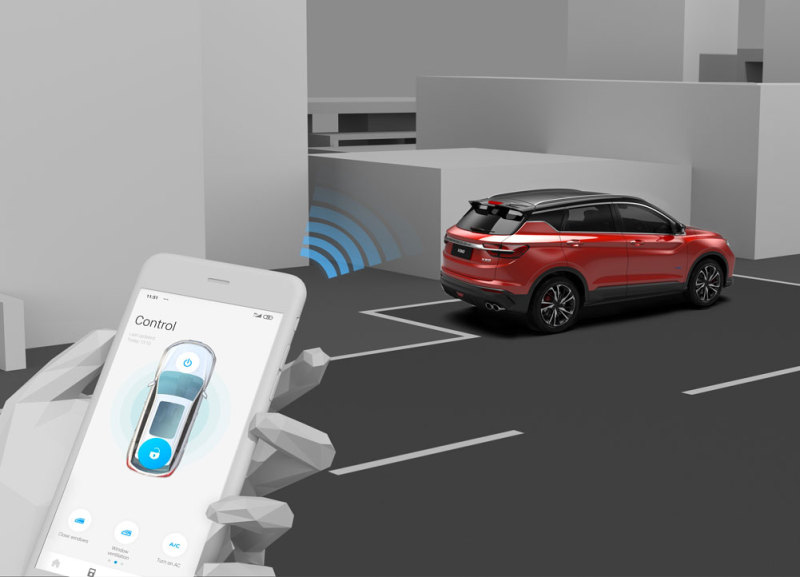
Part 7: What Users Are Saying
Positive Feedback
Owners have given the Proton X50's interior high marks, particularly in three crucial areas:
First, there has been a significant improvement in the build quality and materials. The soft-touch materials used to cover the door panels and dashboard give the cabin a more luxurious appearance. A sportier appearance is also added by higher trims' metal accents and red stitching.
Next, every variant comes with a floating 10.3-inch touchscreen that feels smooth and easy to operate. Paired with a fully digital instrument cluster, it gives a modern, tech-forward vibe. Many people feel this infotainment setup is a considerable upgrade over prior Proton models in both design and function.
Last but not least, the seats are frequently cited as a positive point. Long rides are more comfortable because to the leather seats' strong lower back and leg support. Additionally, the rear seats are angled well, which enhances passenger comfort. Additionally, some users noted that, particularly when traveling at highway speeds, the Proton X50's interior noise insulation is noticeably better than that of its similarly priced Japanese competitors.
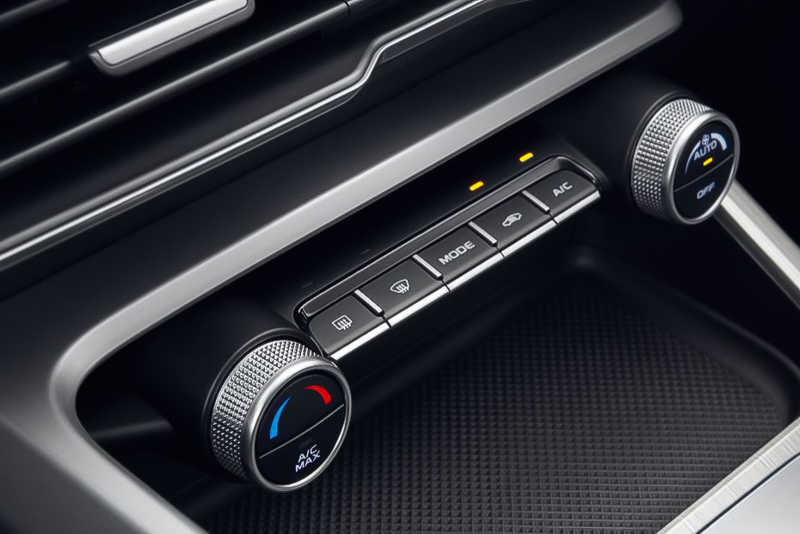
Negative Feedback
While the Proton X50 interior generally gains good reviews, some users pointe out a few drawbacks. One common concern is the use of hard plastics in certain areas, like below the center console and parts of the door panels, which feel a bit cheap to the touch. Although the sporty red stitching and trim on higher trims add flair, some feel the bright colors lack a premium feel.
Some users also mention that the fully digital instrument cluster, while clear, can reflect sunlight strongly at certain angles, making it harder to read. The touchscreen climate controls look modern but aren’t as easy to use on the move compared to traditional knobs.
There are also a few remarks about fit and finish. Some owners noticed uneven gaps in trim panels or occasional rattles. That said, these issues are fairly common in this segment. Overall, given its affordable price, the Proton X50 interior still offers strong value and competitive features.
Part 8: Proton X50 Reviews and Buying Advice
The Proton X50 is a highly affordable B-segment SUV that stands out in its class. It offers strong performance, quality interior finishes, and advanced tech features. The 1.5T turbocharged engine delivers plenty of power while keeping fuel consumption reasonable. This balance makes the X50 a great choice for both city driving and longer trips, providing a smooth and enjoyable ride.
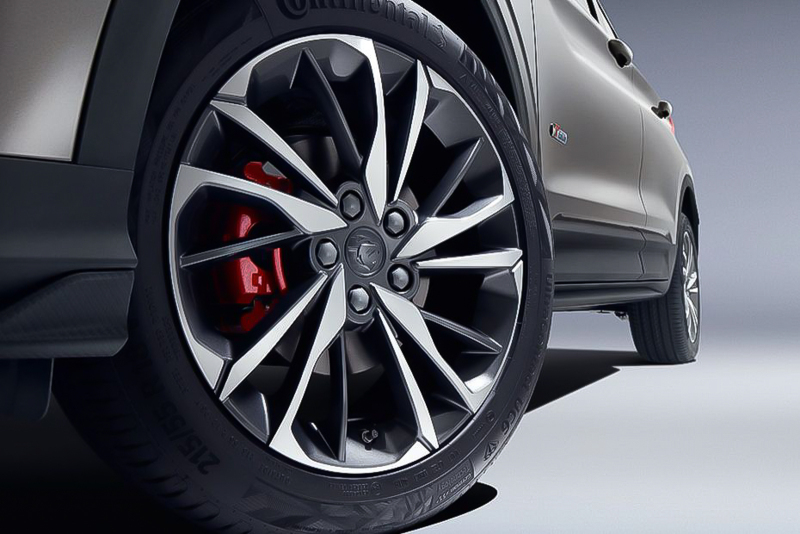
Buying Advice
The Flagship edition is the greatest option if money permits. It has a panoramic sunroof, the cutting-edge ADAS driver assistance system, and many other high-end features. These improve daily driving safety and increase convenience.
For those on a tighter budget, the Executive trim still covers most needs. It includes a 10.3-inch touchscreen, Apple CarPlay/Android Auto, and rear air vents, all very practical for daily use.
One thing to keep in mind is that while the Proton X50 interior shows clear improvements over earlier models, some details in build quality and noise insulation could still be better. We recommend taking plenty of test drives and comparisons before making your decision.
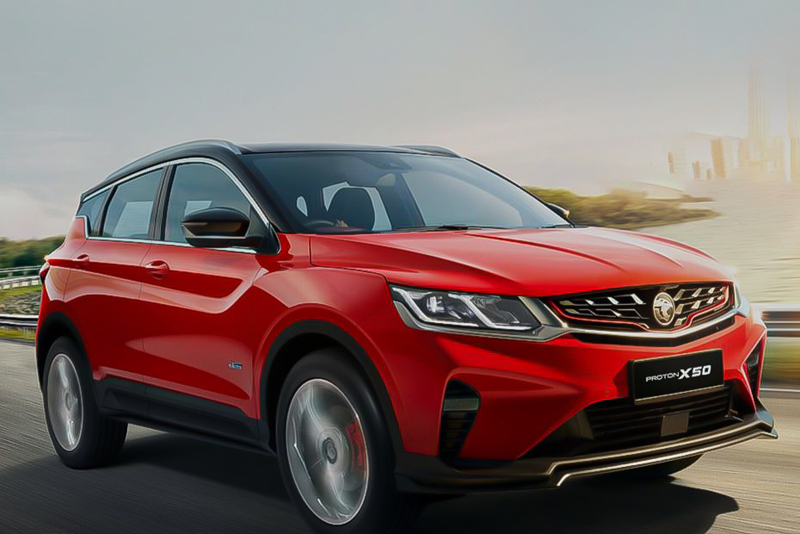
The Proton X50 is an exception to the rule that Proton automobiles aren't as valuable as some Japanese brands. In the used car market, it continues to hold a respectable resale value due to its popularity. All things considered, it is still among the best SUVs from local brands to take into account.
If any infringement occurs, please contact us for deletion
Trending News

BYD Sealion 7 is not only cheaper than Tesla Model Y, what other differences do they have?
Is it better to buy the BYD Sealion 7 or the Tesla Model Y? This really makes one a bit hesitant, but before you make a decision, I recommend you take a good look at this article.

Toyota Land Cruiser FJ did not disappoint, the most anticipated civilian off-road vehicle is back.
Since its birth in 1951 under the name Toyota BJ, the Land Cruiser series has accumulated sales of approximately 12.15 million units in over 190 countries and regions worldwide, becoming a global off-road icon spanning more than 70 years.

Toyota Corolla Cross mid-term facelift in China, featuring a new front face and interior design
Toyota released the mid-cycle facelift of the Toyota Corolla Cross in China. In China, this vehicle produced by GAC Toyota is called Frontlander, and it is the same model as the Toyota Corolla Cross produced by FAW Toyota.

2026 Toyota Hilux Travo released, the brand-new exterior and interior are highly anticipated
If you're considering buying a Hilux, honestly, the comprehensive innovations in the ninth generation are worth waiting for. While the current model might still have some advantages in terms of reliability and price, the new model offers significant changes in terms of exterior and interior luxury, tech features, and powertrain options.

There is news that the next-generation Toyota Hilux will be released in November, bringing a major redesign.
Nowadays, the HiLux, which has been sold for nearly ten years, is about to undergo a major upgrade. According to reports, the 2026 HiLux will make its global debut at the Thailand International Motor Expo from November 28 to December 10, 2025, with the first customer deliveries expected to be completed by mid-year.
Popular Cars
Car Compare

